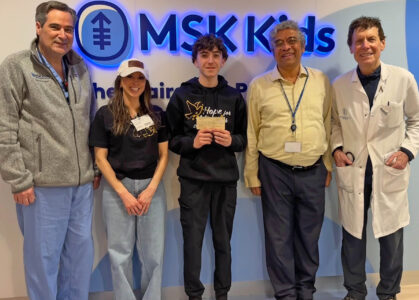A geothermal utility in Saranac Lake?
Village discussing complex plan that could kickstart geothermal system
SARANAC LAKE — The village is considering a plan that would allow it to start up a geothermal heating and cooling utility, in theory, without paying a dollar for the massive project.
A set of circumstances are lining up to make this a possibility — state grants, a contract with a multinational conglomerate and the Adirondack Park Agency’s plan to relocate its headquarters to downtown Saranac Lake.
The village board is set to discuss this again at its meeting on Tuesday evening. The board is showing feelings of excitement and hesitancy. Some see this as an opportunity too big to pass up. Others want more confirmation that the planned path is guaranteed to happen, to avoid the village needing to pick up an unexpected bill.
Mayor Jimmy Williams said former village Manager Erik Stender brought the geothermal idea to the village first in 2022 and then introduced village officials to Mitch DeWein from Albany-based engineering firm CHA Consulting.
With DeWein’s help, the village applied for a grant from the state Energy Research and Development Authority and got $100,000 for a geothermal feasibility study. The study recommended “rings” of development — starting downtown with wells dug beneath village parking lots and bringing on several large “anchor” customers, then spreading the utility into residential areas.
This would give Saranac Lake the first municipally-owned geothermal utility in the state, Williams said.
Then, the village got a $500,000 grant for engineering and design. This design came with a $500,000 match from the village required, though.
Last year, the village signed a contract with Siemens, an international technology conglomerate, for the company to find and finance energy efficiency projects. The village would then pay off the debt to the company with the savings from those upgrades and revenue from energy customers.
Williams said Siemens would cover the village’s $500,000 match on the grant, as well as implementation of the project — essentially meaning the village would not have to spend money on the project.
Then, the Adirondack Park Agency expressed interest in relocating its headquarters from Ray Brook to the village-owned 1-3 Main St. building, which has a parking lot that is one of the proposed well field sites.
If the village secures the APA as an “anchor customer,” Williams said it could be a “mutually beneficial” partnership.
“They would be such a large customer, that the revenue gained from the utility would actually pay the debt,” Williams said.
Siemens would pay for the installation, the village would owe Siemens a debt.
The APA would pay the village for geothermal services. The village would use that money to pay off the debt.
Eventually, the utility bills paid to the village for geothermal would become village revenue.
But the APA’s plans were on hold for a bit as it did not have enough funding.
The use of the geothermal grant was on hold for a while. NYSERDA told the village it needs to use it or lose it.
With an extra $10 million for the now-$40 million APA headquarters project approved in this year’s state budget, the project came off the shelf, Williams said.
A state executive order has mandated that any new state building should avoid being heated with fossil fuels. Williams said the APA could either do electric or geothermal, and said it is more expensive to electrify. Geothermal is a cheaper, greener and renewable method of heating and cooling.
The APA would pay for the utility monthly at a set price-per-square foot. That rate has not been set yet. Williams said they’ll need to see if the rate works for the APA.
The project is still years away from being a reality, and is not guaranteed at this time, but the agency has named the location at the intersection of Main Street, Lake Street and Kiwassa Road as its “preferred site.”
The building could also hook up to conventional HVAC and the project is not dependent on geothermal connection.
There’s been contention over this APA move, though, with different groups of Saranac Lakers writing letters supporting or opposing it.
To read more about the APA headquarters project, go to tinyurl.com/3yz38265.
It’s unclear how large the debt to Siemens would be and how long it would take to pay it off. This depends on what the total cost of the system would be. Williams said they won’t know that until they reach 60% design completion. The whole idea is just conceptual right now.
The next step would be to execute the $500,000 contract with NYSERDA and accept the grant. The village has asked to split this grant into two $250,000 phases — one for the 1-3 Main St. engineering and another for a second phase of design at a location that has not been chosen yet. The village is still waiting for confirmation that they’ll be allowed to do this.
The entire system with wells in village parking lots up and down Main Street was estimated to cost $14 million several years ago.
There are also tax credits from the Inflation Reduction Act for geothermal systems, which cover 30% to 40% of the cost.
–
Questions
–
Village trustees have questions they want answered about the plan before they sign on to it, though.
Trustee Aurora White wondered about the cost to tap into the system — if it’s too prohibitive for homeowners and business owners.
DeWein said the cost to tap in would vary. But when he spoke to downtown local businesses two years ago, most told him their heating systems are nearing the end of their lives. Most businesses have fuel delivered for heat. Although it’s a premium up-front cost to retrofit into a geothermal system, he said they expressed interest in investing in the long-term savings geothermal would provide.
Williams said that businesses and homeowners are also eligible for the 30% to 40% tax credits.
White wants guarantees from Siemens and the APA that they’ll hold up their ends of the deals.
She also wondered what would happen if the APA doesn’t end up relocating there.
Williams said they should be able to finalize a lease with the APA before building the wells, to guarantee it as a customer.
If the APA does not move there, Williams said they’d need to work out with Siemens how much of the $250,000 engineering grant match the village would be responsible for. White does not want taxpayers who don’t directly benefit from geothermal to have to have to pay for its installation.
Williams also said the village could find another anchor client, having already spent the money on engineering and designing the wells.
The Harrietstown Housing Authority’s Lake Flower Apartments high rise building across the intersection could potentially tap into these wells, too. Williams said the residents there have never had cooling supplied in the building.
Future phases could extend the utility down Main Street to the Hotel Saranac. Maps from the study show it could later expand around Church Street to St. Bernard Street and down Petrova Avenue to the planned public safety building 33 Petrova Ave. Eventually, it could also include Lake Flower Avenue and then become villagewide.
Essentially, the village would become a utility company. The nearby villages of Lake Placid and Tupper Lake operate municipal electric utilities, which make electric rates much lower for their residents than in Saranac Lake.
Williams said geothermal takes much less maintenance than utilities like electric, so it would be less of a cost for the village to run. After nearly every storm, electric utilities need to be repaired. Williams said geothermal wells are installed and then sit safely underground.
He called them “100-year systems.”
Proponents say geothermal is the future of heating and cooling, and that this opportunity will only come once.
Adirondack North Country Association Climate and Energy Director Jill Henck told the board not to pass up on this “really unique opportunity” to subsidize the initial work of installing geothermal wells. She said this opportunity is not happening anywhere else and that other green energy incentives for things like solar panels or air pumps are going away on the federal and state levels.
Williams felt the village can do this now or chase the money to do it in the future. Under the current federal administration, he said they’re likely to not see much money put toward geothermal for a couple of years.
Jesse Schwartzberg of Black Mountain Architecture said geothermal is “incredible.” If it weren’t for the large up-front cost, he’d do it on every project.
–
How geothermal works
–
Geothermal wells are tubes drilled deep into the ground to reach a point in the Earth’s crust that is always at a stable temperature — usually around 40 degrees, Williams said. The tubes circulate water and are arranged in a loop for supply and return. The groundwater and rocks warm or cool the liquid in the pipes, depending on the season.
In the winter, the water and rock underground is warmer than the air. The system takes that heat energy and draws it up to the surface, using compression to raise its temperature even more.
In the summer, the system takes heat from the building and rejects it back into the ground to cool the building.
Williams said if the system goes more large-scale, eventually the village could lay geothermal pipes alongside other utilities like water and sewer under the roads — adding service lines as roads are redone.




